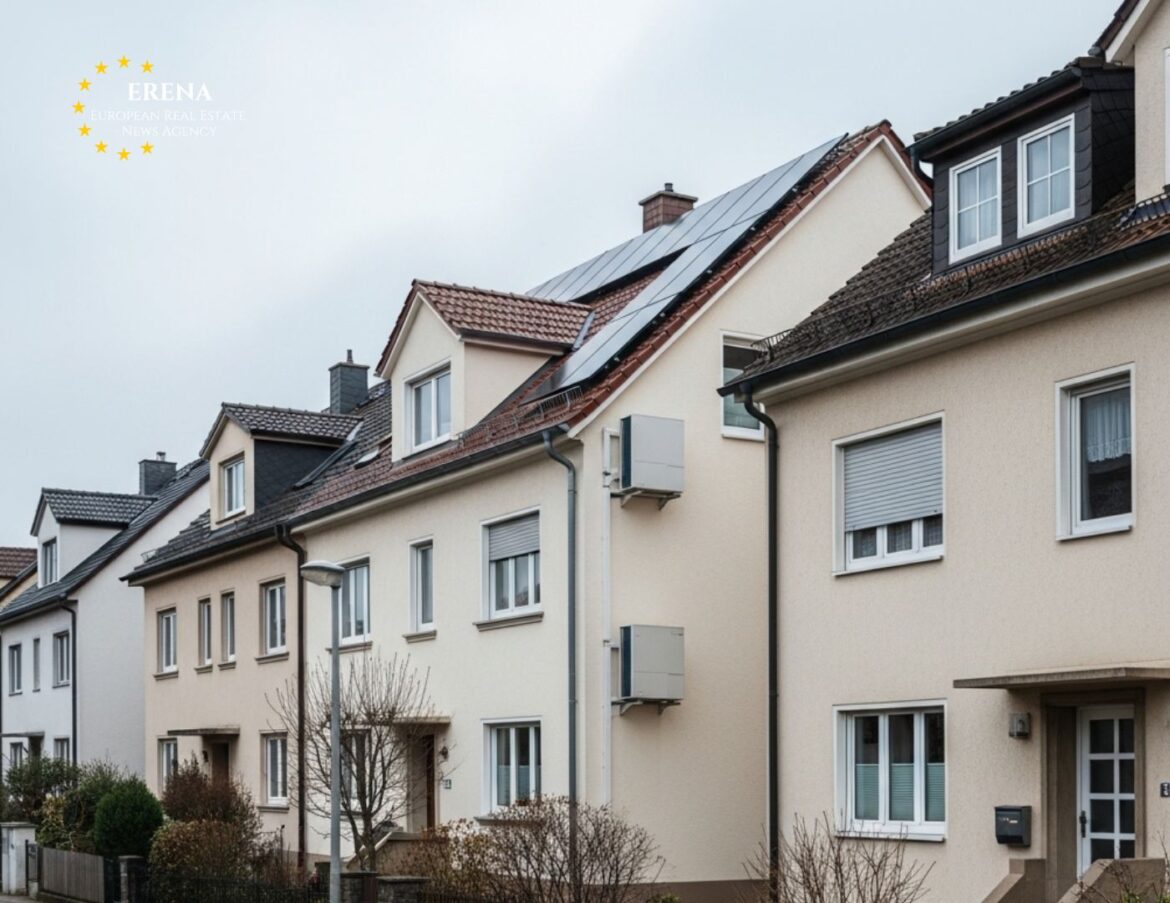The European Union will need to invest approximately €40 billion per year to retrofit residential buildings rated C under the Energy Performance Certificate (EPC) system. These upgrades are essential if the bloc is to meet its ambitious climate goals, reduce carbon emissions, and ensure energy efficiency across its housing stock. According to recent studies by sustainable construction think tanks, without large-scale investment in housing retrofits, the EU is unlikely to deliver on its commitments under the European Green Deal and Climate Pact.
The Scale of the Challenge
Currently, over 40% of residential buildings in EU member states have an EPC rating of C or lower. Under the EPC system, a C rating is considered average but still indicates significantly higher energy consumption compared to modern buildings rated A or B.
Buildings in the EU are responsible for approximately 36% of greenhouse gas emissions and consume nearly 40% of the region’s total energy. The majority of C-rated homes were built before the 1990s and typically lack proper insulation, use outdated heating and ventilation systems, and suffer from low energy efficiency overall.
EU Climate Targets
According to the EU’s Energy Performance of Buildings Directive (EPBD), member states are required to significantly improve the energy efficiency of their building stock. By 2030, all new buildings must be zero-emission, and by 2050, most existing buildings must be retrofitted to nearly zero-energy standards (nZEB).
Achieving these targets demands substantial investment, particularly in thermal insulation, window replacement, installation of solar panels and heat pumps, and deployment of smart energy management systems.
Cost Estimates and Investment Needs
A recent report by the European Investment Bank (EIB) estimates that upgrading all C-rated buildings to at least a B rating would require at least €40 billion annually for the next 15 to 20 years. The total cost of retrofitting the EU’s residential housing stock could reach up to €800 billion.
These investments must come from a mix of private, national, and EU-level funding sources. While initiatives like REPowerEU and NextGenerationEU have earmarked substantial funds, they fall short of fully addressing the needs of the sector.
Who Will Pay for the Upgrades?
The financing of retrofits remains a major question. At present, a significant portion of the costs is expected to be borne by homeowners, many of whom lack the financial capacity or motivation to invest in large-scale renovations. While several EU countries offer subsidy programs, tax incentives, or green loans, these are not yet widespread or accessible enough.
The European Commission is considering a range of financial tools to bridge the gap, including:
- A pan-European Green Renovation Fund;
- EIB-backed guarantees to attract private capital;
- Expansion of green mortgages with reduced interest rates;
- Integration of energy performance into property credit assessments.
Another proposed measure includes making energy efficiency upgrades mandatory prior to the sale or rental of properties, which could further encourage homeowner participation.
Benefits of Retrofitting
Despite the significant upfront costs, energy-efficient retrofitting brings considerable long-term advantages:
- Reduced energy bills: Energy consumption can fall by 30–60% after insulation, window replacement, and HVAC upgrades.
- Increased property value: Homes with higher EPC ratings sell and rent more quickly and at better prices.
- Improved comfort and health: Enhanced thermal comfort, better indoor air quality, and reduced noise levels.
- Lower carbon emissions: Retrofits play a critical role in meeting national and EU-wide climate targets.
Experts estimate that every euro invested in energy-efficient renovations could yield up to €3 in savings from lower energy use and climate-related damage mitigation.
Barriers and Challenges
However, the path to mass retrofitting is not without obstacles. Key challenges include:
- Lack of awareness: Many property owners are unaware of existing financial support schemes.
- Bureaucratic hurdles: Permits and administrative procedures can be slow and complex.
- Skilled labor shortage: There is a lack of trained professionals in energy-efficient construction and certified installers.
- Material costs: Inflation and supply chain disruptions have driven up the price of key building materials.
There is also concern that stricter energy requirements could marginalize low-income homeowners, who may struggle to afford retrofits or be penalized when selling or renting out older, inefficient homes.
Success Stories Across Europe
Some countries have already made significant progress:
- France: The MaPrimeRénov’ scheme offers up to €20,000 per household for energy renovations.
- Germany: The KfW bank provides low-interest loans and grants for retrofitting.
- Netherlands: Offers subsidies of up to 30% for installing heat pumps and solar panels.
- Italy: The Superbonus 110% program allowed homeowners to deduct the full cost of renovations through tax credits (though it was scaled back in 2024).
These programs demonstrate the impact well-designed incentives can have on homeowner behavior and energy savings.
Market Implications
Retrofitting demand is also expected to drive job growth in the construction, renewable energy, and smart technology sectors. According to EU forecasts, the green renovation wave could create over 160,000 new jobs by 2030 if properly supported.
Moreover, financial institutions are beginning to see retrofit lending as a viable business opportunity. Green loans, renovation-linked mortgages, and performance-based financing models are gaining traction in several markets.
Conclusion
The EU faces a critical moment in its journey toward a climate-resilient and energy-efficient future. Retrofitting the bloc’s vast stock of EPC C-rated homes will require annual investments of around €40 billion, but the rewards are substantial — lower emissions, energy savings, increased property values, and improved quality of life.
With the right mix of policy support, financial innovation, and public-private cooperation, Europe can transform one of its biggest climate challenges into a success story. The time to act is now — because every delayed renovation brings us further from the continent’s green future.

